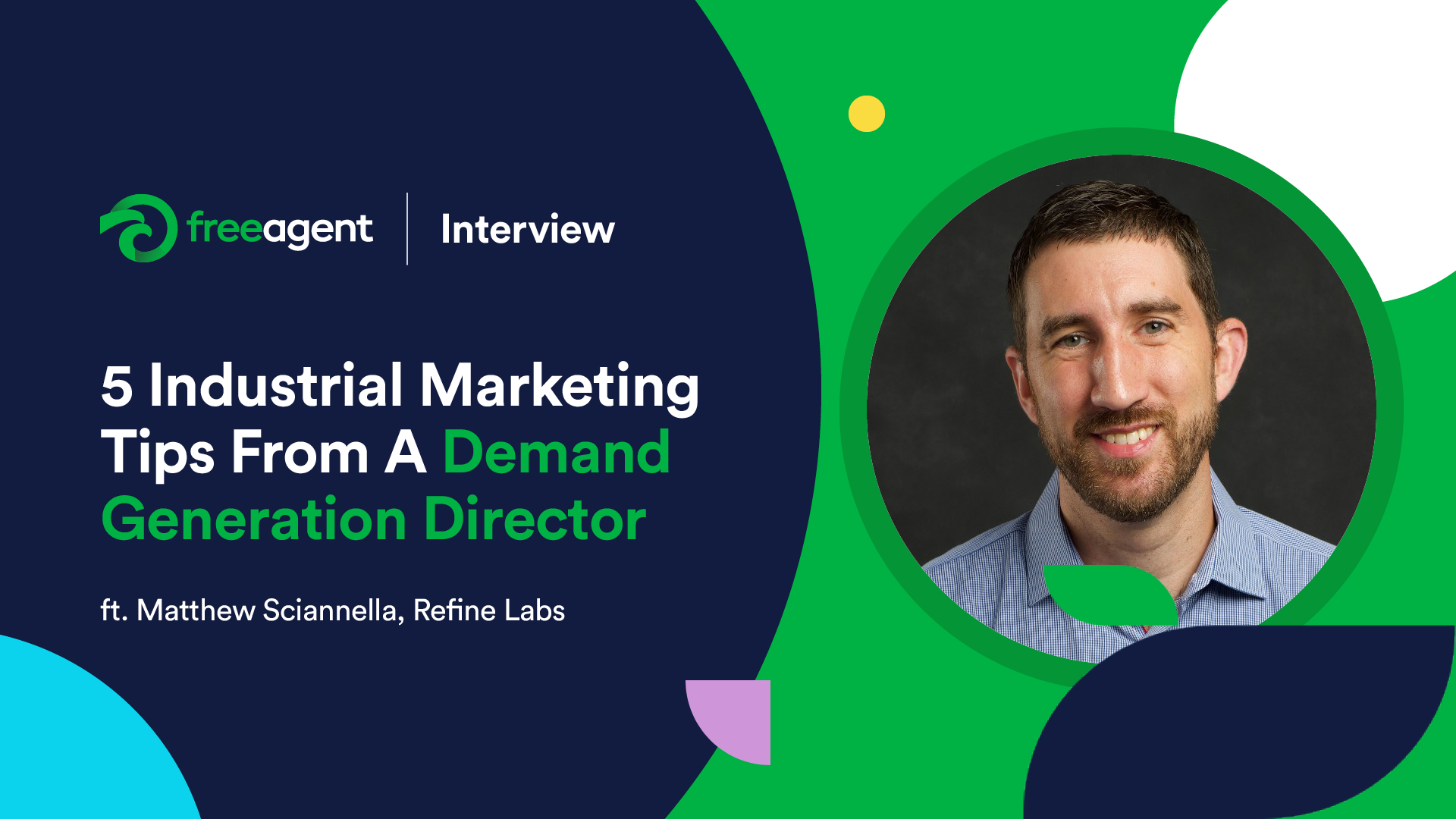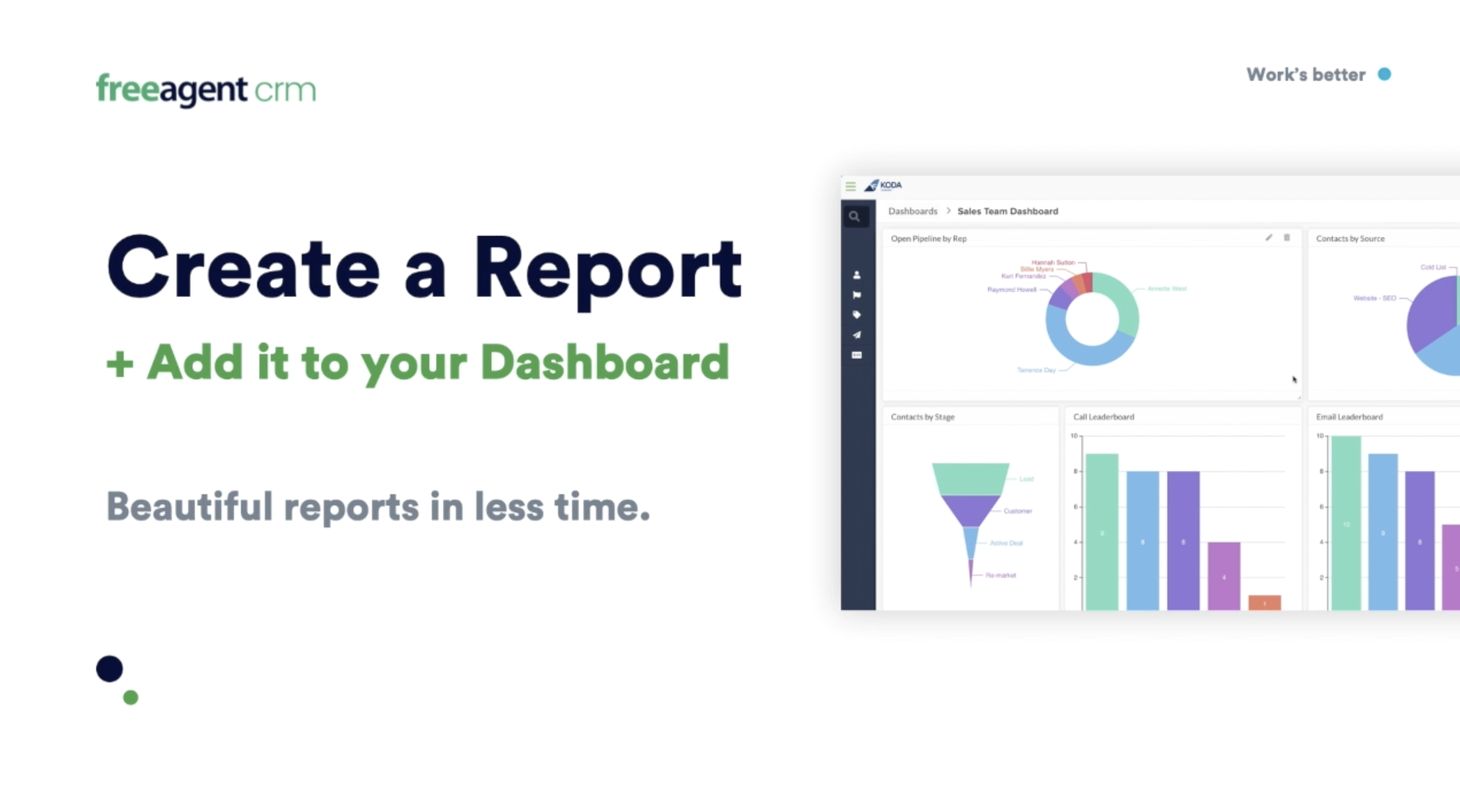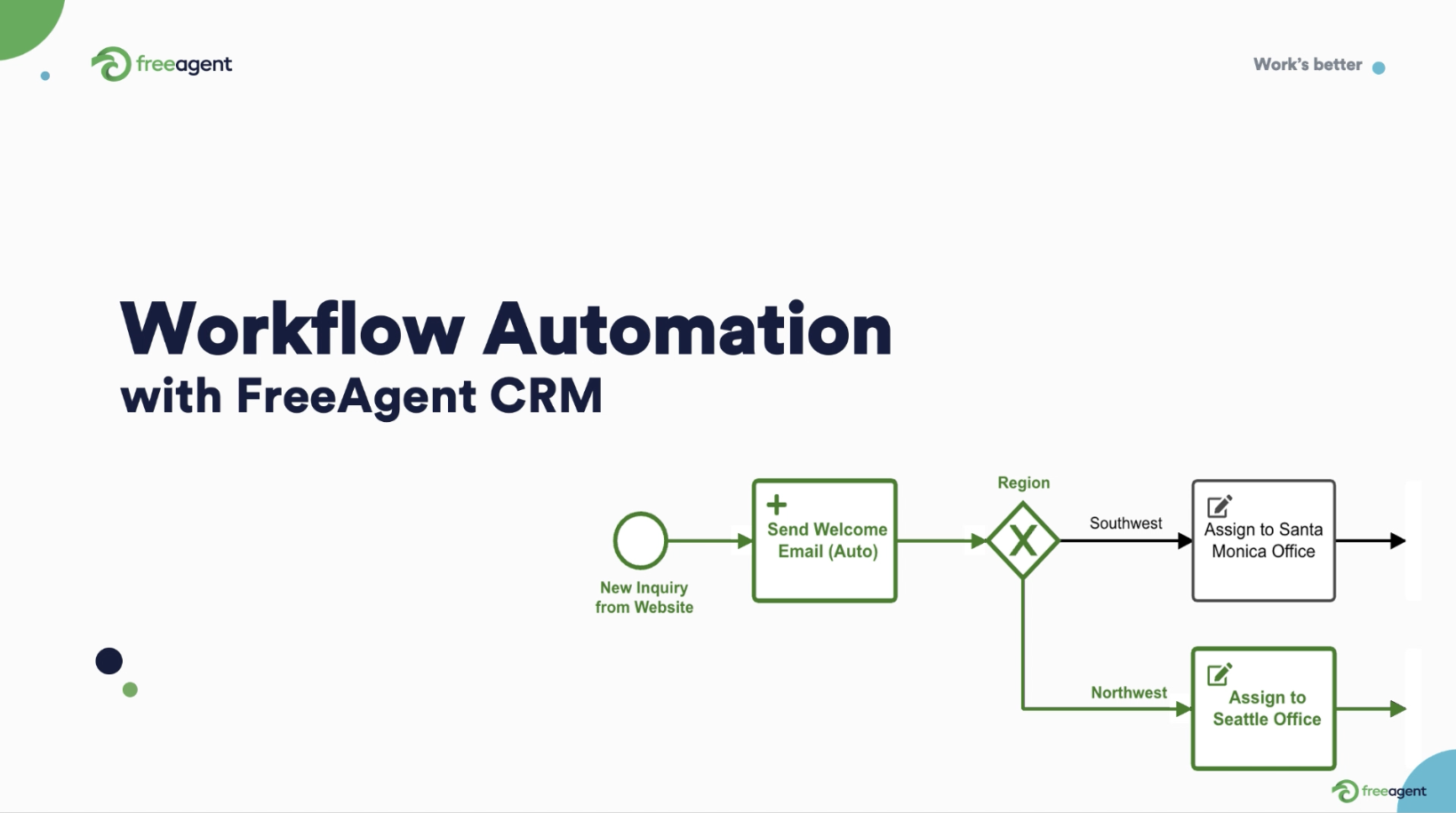At 30 years old, Matthew Sciannella transitioned from technical proposal writing to marketing and never looked back.
Over the next seven years, he rose up the ranks to lead a team of marketers at Gorilla 76, helping industrial brands nail their marketing.
He’s now the latest director of demand generation at Refine Labs, a B2B demand generation agency.
“I wanted to be a writer. I was thinking about being an English professor before I decided marketing was the career path for me.”
Matthew Sciannella, Director of Demand Generation at Refine Labs
Speaking to Mo from his DC home, Matthew shares his five core insights for industrial marketers and marketing leaders:
- Nail your messaging
- Get closer to your customers
- Do content marketing differently
- Think like a leader to advance your career
- Hire the right people from the start

1. Nail your messaging
A positioning document helps your team understand your product’s unique benefit and how you differ from competitors.
Messaging is how you bring that positioning to life in different ways through web copy, content, ads, and other marketing assets.
Having a distinct point of view differentiates you from everyone else. Your brand narrative should cast your customer as the hero with your product as their secret weapon.
Without a coherent narrative or distinct point of view, you risk sounding like every other player in your space — competing on marginal features, promising the same vague ‘efficiency’ and ‘high-quality,’ and offering endless discounts in a race to the bottom.
Naturally, having a distinct point of view means you’ll delight some customers and repel others. Most industrial executives abhor this thought and would rather be as vanilla as possible to appeal to everyone.
But trying to please everyone ends up converting no one, as your message fails to stand above the noise. If you’re going to succeed in B2B marketing, taking a stand and having a POV is essential.
2. Get closer to your customers
Good marketing infuses the language your customers use — from how they talk about their needs and concerns to the outcomes they seek.
This is where getting closer to your customers helps. Two effective ways of accomplishing that are user interviews and community engagement.
Firstly, reach out to your top customers to find out how they feel about your product, customer service, sales process, and the market in general.
You’ll use this information to produce relevant customer stories and inform product development and pricing.
Next, join relevant communities around your field to maintain a near-constant feedback loop between your company and your customers.
Many of these communities live on Slack, Facebook, LinkedIn, and Twitter. Find and join relevant groups in your space online. If such communities don’t exist, create one.
Community is a moat for your business. While competitors can easily copy product features, they can’t steal your community of engaged buyers and prospects as easily.
While a community management function is typically delegated to Marketing, it’s crucial for everyone in your company to be a part of your community. Such immersion leads to a better understanding of your customers.
Potential outcomes include:
- Marketing polishing copy to reflect how customers describe their pain points
- Product and R&D getting valuable intel to craft a better product
- Sales understanding how customers want to buy the product
- Customer Success/Support troubleshooting issues faster
3. Do content differently
Sales is about building relationships — but calling customers and visiting prospects endlessly to build rapport isn’t sustainable.
Content marketing helps you build these relationships in a scalable, asynchronous way across all market segments and timezones.
When B2B companies think about ‘content marketing,’ they picture writing blog posts to rank for specific keywords and drive traffic and conversions.
On social media, they are content to post about their product all day and dabble in paid ads to boost reach.
And while there’s a place for these tactics in any marketing strategy, you’ll quickly hit a ceiling.
Firstly, the organic reach from branded social media pages has dropped considerably over the past few years. Merely launching a company page and blasting promotions into the wild won’t get you far.
Secondly, the traffic you get from paid ads ends when you stop spending money. This means you have to keep running digital campaigns to see results.
But because your competitors are bidding on the same keywords as you, the only way to win that game is to outspend them all — which is unsustainable.
Thirdly, SEO writing takes time to bear fruit. You won’t rank for a keyword until a few months in — and even then, you need to promote your content extensively to acquire backlinks.
Does that mean you should ignore SEO, social media, or paid ads? No. These tactics have a place in your marketing toolbox, but there’s more you can do to increase their effectiveness.


SEO
For SEO, create helpful content that addresses your audience’s Jobs-To-Be-Done, not just your profit goals.
For example, how should your market’s executives think about investing in your category? What deeply tactical guides can you create for them?
Industrial executives want to understand how to shave costs and maximize operating profits. They want to know how to spot the right engineering talent before anyone else.
Government regulations constrain their activities, and they’d like to understand how to remain compliant. These are all topics you can address through content.
Once you’ve created these (ungated) guides, place them in the hands of your audience directly. This can be through organic messages on LinkedIn or via email.
You can also run ads against your target audience to ensure they’ve seen your new content. This is how to generate demand instead of only capturing it.
Social media
On social media, one deeply underrated marketing tactic is employee-led social media marketing. This involves getting your entire company active on social media.
“I worked at Gravy, a fintech startup, before moving to Gorilla 76. Casey Graham, the CEO, mobilized the customer service, sales, and product team to get active on LinkedIn. We all sang the gospel of revenue recovery for subscription boxes and SaaS companies.”
Matthew Sciannella, Director of Demand Generation at Refine Labs
This tactic is effective because people buy from people. The more ‘people’ you’ve got talking about your product — employees, customers, and subject matter experts — the more trust you’ll build and sales you’ll drive.
This means:
- Your CEO should be on social media, leading the charge in telling your company’s story and offering thought leadership
- Your sales director should share their thoughts on the industry and the solutions you offer
- Your HR lead should highlight the challenges of hiring and retaining people in your field — and how you’re solving that problem
- Your marketing team should speak to subject matter experts and turn their insights into practical, actionable content (like what we’re doing now)
“We got most of our business through LinkedIn. We grew a 150% year over year and just dominated in that space. We got ourselves more brand awareness and affinity, and more people wanted to work with us because they knew our people more than any other company.”
Matthew Sciannella, Director of Demand Generation at Refine Labs
Done well over time, this strategy pays massive dividends. Case in point: Matthew moved from Gorilla 76 (his employer at the time of this interview) to Refine Labs, a demand generation agency.
The team at Refine Labs spends time on LinkedIn educating their audience, and the CEO’s LinkedIn posts were a big reason Matthew made the move.
This shows that consistent, employee-led content marketing not only attracts new customers but also makes hiring top talent easier.
4. Think like a leader to advance your marketing career
The higher you climb up the ladder, the more your mindset must shift from independent contributor to leader.
At an IC level, your role might involve creating content, managing CRM data, running growth experiments, and doing outreach.
But at managerial and executive levels, your priorities shift to people management, delegation, and process definition and documentation. You focus less on the ‘how’ of things and more on the ‘why.’
You also need cross-functional analysis at those levels — for instance, understanding how marketing feeds into sales, or how new product features affect your messaging.
“You have to look at the whole business when you’re a VP of Marketing or CMO. The higher up you go, the wider your view has to be.”
Matthew Sciannella, Director of Demand Generation at Refine Labs
At higher levels, your job prioritizes coaching people and removing blockers from their workflow.
You don’t need to know which CRM has the best features on the market — that’s what you hired a Marketing Ops person for. You do, however, need to ensure that she has everything she needs to do her job.
5. Hire the right people from the start
For industrial marketing leaders, your first marketing hires are crucial. Who you’ll hire depends on who owns the product in your company.
If Marketing owns the product, they can champion the voice of the customer better. Your early hires will be in:
- Demand gen — for comms and content
- Product marketing — for competitor research, customer stories, and landing pages
If Engineering owns the product — or if Product is a separate function — then hire a content lead, growth lead, and RevOps or Marketing Ops lead (for larger companies).


The role of Marketing Ops on your industrial marketing team
A Marketing Ops role is essential in the early days because it is responsible for CRM hygiene, data integrity, and managing your software.
- Product Marketing draws on user data to craft customer stories and landing pages
- Content needs segmented data to craft resonant email campaigns and posts
- Paid Media and Growth teams need clean CRM data to run campaigns
- Marketing needs to track all its software subscriptions
Marketing Ops isn’t a common hire in industrial B2B circles, so prioritizing this role gives you an edge over your competitors.
If you don’t have the resources to hire a Marketing Ops person, dive into your CRM yourself and get your hands dirty.
Explore your CRM’s reporting function, generate a few forecasts, and segment data to get a feel for the tool.
If possible, sandbox your CRM so you can play with dummy data before working on live data.
“As a marketer, you need to understand Marketing Ops. I don’t think I’ve gotten more technical know-how in my career than diving into CRMs and doing my own reporting, forecasting, and segmentation.”
Matthew Sciannella, Director of Demand Generation at Refine Labs
To improve your knowledge of Marketing Ops:
- Follow Marketing Ops newsletters and people on social media
- Explore topics around CRM hygiene and data segmentation
- Document your journey through content
This is how you attract other industrial marketers into your network.
Rebranding? Your CEO should lead the charge
There are three requirements to a successful industrial company rebrand:
- Alignment and support from management
- Alignment with sales and other departments
- A third-party perspective from outside partners
Without C-suite involvement in the rebranding process, internal friction prevails. Marketing and Sales must also align on what the rebrand means for the company’s customers so they can evangelize it properly.
Finally, rebranding yourself is like marking your own exam paper — you’ll be tempted to gloss over weak spots and praise falsely-perceived strengths.
Working with an industrial marketing agency can bring a third-party perspective to help you identify threats and opportunities.
An agency brings the due diligence, resources, experience, connections, and creativity for a successful rebrand.
“Rebrands are exhaustive and are a huge decision for your company. Having an outside agency helps you manage that process.”
Matthew Sciannella, Director of Demand Generation at Refine Labs
What’s more, a rebrand is always an ongoing exercise. If your new rebrand doesn’t quite resonate, tweak it again in 9-12 months.
However, Matthew cautions, rebranding shouldn’t be done by committee. While it’s important to source insights from Sales, management, the product team, and the agency, Marketing should spearhead all rebranding efforts.
Master industrial marketing today
Your messaging supports your positioning and shows customers you understand their needs, fears, and jobs-to-be-done.
Immersing yourself in your audience’s communities creates faster product, pricing, and marketing feedback loops.
You can improve brand awareness and other demand gen efforts by creating helpful content that educates before selling, bolstered by paid ads.
And whether you’re a one-person team or a marketing leader managing specialists, taking the 10,000-ft. view is almost always more productive for your career.
At FreeAgent CRM, we’ve designed our tool to fit into the workflows of industrial marketers looking to manage leads better, complete tasks faster, and gain full context and visibility into their operations.
Get a hands-on, sales-free demo of FreeAgent here.







